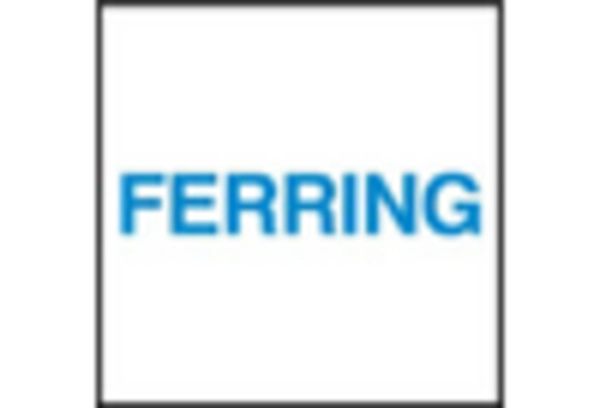Increased Focus on Women's Health
The heightened focus on women's health issues is a vital driver for the Infertility Drug Market. As awareness of reproductive health and fertility challenges grows, there is a corresponding increase in the demand for infertility treatments. Initiatives aimed at educating women about their reproductive health, coupled with advocacy for better healthcare access, have led to a surge in the number of women seeking infertility solutions. This trend is reflected in the rising sales of infertility drugs, which are becoming more widely recognized as essential components of women's healthcare. Furthermore, the emphasis on personalized medicine in treating infertility is likely to enhance the effectiveness of these drugs, thereby attracting more patients. As the Infertility Drug Market continues to evolve, the focus on women's health will remain a driving force behind its expansion.
Increasing Prevalence of Infertility
The rising incidence of infertility is a pivotal driver for the Infertility Drug Market. Factors such as delayed childbearing, lifestyle changes, and environmental influences contribute to this trend. According to recent estimates, approximately 15% of couples experience infertility, which translates to millions of individuals seeking treatment. This growing demand for infertility solutions propels the market forward, as pharmaceutical companies invest in research and development to create innovative drugs. The increasing prevalence of conditions such as polycystic ovary syndrome (PCOS) and endometriosis further exacerbates the situation, leading to a heightened need for effective infertility medications. As awareness of these conditions grows, the Infertility Drug Market is likely to expand, driven by the urgent need for effective treatment options.
Advancements in Pharmaceutical Research
Innovations in pharmaceutical research are significantly shaping the Infertility Drug Market. The development of new drugs and treatment protocols, including hormonal therapies and assisted reproductive technologies, has revolutionized infertility treatment. Recent advancements in biotechnology and genomics have enabled the creation of targeted therapies that address specific causes of infertility. For instance, the introduction of medications that enhance ovarian function or improve sperm quality has shown promising results. The market is projected to witness substantial growth, with estimates suggesting a compound annual growth rate (CAGR) of over 8% in the coming years. This growth is fueled by ongoing clinical trials and the introduction of novel therapies, which are expected to enhance the efficacy of infertility treatments and expand the options available to patients.
Rising Investment in Healthcare Infrastructure
The increasing investment in healthcare infrastructure is a crucial driver for the Infertility Drug Market. Governments and private entities are allocating substantial resources to enhance healthcare facilities, particularly in reproductive health. This investment is aimed at improving access to infertility treatments and ensuring that patients receive timely and effective care. Enhanced healthcare infrastructure facilitates the establishment of specialized fertility clinics and laboratories, which are essential for the administration of advanced infertility treatments. As a result, the availability of infertility drugs is likely to increase, catering to a broader patient base. Furthermore, improved healthcare systems contribute to better patient education and awareness, which can lead to higher treatment uptake and, consequently, a more robust Infertility Drug Market.
Growing Acceptance of Assisted Reproductive Technologies
The growing acceptance of assisted reproductive technologies (ART) is a significant driver for the Infertility Drug Market. As societal attitudes towards infertility treatments evolve, more individuals are willing to explore ART options such as in vitro fertilization (IVF) and intrauterine insemination (IUI). This shift in perception is accompanied by an increase in the number of fertility clinics and the availability of infertility drugs that support these procedures. Data indicates that the number of ART cycles performed annually has been steadily rising, with millions of procedures conducted worldwide. This trend not only boosts the demand for infertility medications but also encourages pharmaceutical companies to invest in developing new and improved drugs tailored for ART. Consequently, the Infertility Drug Market is poised for growth as acceptance of these technologies continues to expand.


















Leave a Comment